LOS ANGELES TOP 7 NEIGHBORHOODS?
In this video, we will review 7 Neighborhoods in the city of Los Angeles. Many beautiful pockets in the City of Angels.....let's review
“The Road Not Taken” by Robert Frost
Two roads diverged in a yellow wood,
Robert Frost poetAnd sorry I could not travel both
And be one traveler, long I stood
And looked down one as far as I could
To where it bent in the undergrowth;
Then took the other, as just as fair,
And having perhaps the better claim,
Because it was grassy and wanted wear;
Though as for that the passing there
Had worn them really about the same,
And both that morning equally lay
In leaves, no step had trodden black.
Oh, I kept the first for another day!
Yet knowing how way leads on to way,
I doubted if I should ever come back.
I shall be telling this with a sigh
Somewhere ages and ages hence:
Two roads diverged in a wood, and I—
I took the one less traveled by,
And that has made all the difference.
Los Angeles (US: Spanish: Los Ángeles, pronounced [los ˈaŋxeles], lit. 'The Angels'), referred to by its initials L.A. is the largest city in California. With a 2020 population of 3,898,747, it is the second-largest city in the United States, following New York City. Los Angeles is known for its Mediterranean climate, ethnic and cultural diversity, Hollywood film industry, and sprawling metropolitan area.
The City of Los Angeles lies in a basin in Southern California, adjacent to the Pacific Ocean, and extends through the Santa Monica Mountains and into the San Fernando Valley, covering a total of about 469 square miles (1,210 km2). It is the seat of Los Angeles County, which is the most populous county in the United States.
Home to the Chumash and Tongva indigenous peoples, the area that became Los Angeles was claimed by Juan Rodríguez Cabrillo for Spain in 1542. The city was founded on September 4, 1781, under Spanish governor Felipe de Neve, on the village of Yaanga.] It became a part of Mexico in 1821 following the Mexican War of Independence. In 1848, at the end of the Mexican–American War, Los Angeles and the rest of California were purchased as part of the Treaty of Guadalupe Hidalgo, and thus became part of the United States. Los Angeles was incorporated as a municipality on April 4, 1850, five months before California achieved statehood. The discovery of oil in the 1890s brought rapid growth to the city. The city was further expanded with the completion of the Los Angeles Aqueduct in 1913, which delivers water from Eastern California.
Los Angeles has a diverse and robust economy and hosts businesses in a broad range of professional and cultural fields. It also has the busiest container port in the Americas.[19] In 2018, the Los Angeles metropolitan area had a gross metropolitan product of over $1.0 trillion,[20] making it the city with the third-largest GDP in the world, after Tokyo and New York City. Los Angeles hosted the 1932 and 1984 Summer Olympics and will host the 2028 Summer Olympics.
The city of Los Angeles covers a total area of 502.7 square miles (1,302 km2), comprising 468.7 square miles (1,214 km2) of land and 34.0 square miles (88 km2) of water.[68] The city extends for 44 miles (71 km) north-south and for 29 miles (47 km) east-west. The perimeter of the city is 342 miles (550 km).
Los Angeles is both flat and hilly. The highest point in the city proper is Mount Lukens at 5,074 ft (1,547 m), located at the northeastern end of the San Fernando Valley. The eastern end of the Santa Monica Mountains stretches from Downtown to the Pacific Ocean and separates the Los Angeles Basin from the San Fernando Valley. Other hilly parts of Los Angeles include the Mt. Washington area north of Downtown, eastern parts such as Boyle Heights, the Crenshaw district around the Baldwin Hills, and the San Pedro district.
Surrounding the city are much higher mountains. Immediately to the north lie the San Gabriel Mountains, which is a popular recreation area for Angelenos. Its high point is Mount San Antonio, locally known as Mount Baldy, which reaches 10,064 feet (3,068 m). Further afield, the highest point in the Greater Los Angeles area is San Gorgonio Mountain, with a height of 11,503 feet (3,506 m).
The Los Angeles River, which is largely seasonal, is the primary drainage channel. It was straightened and lined in 51 miles (82 km) of concrete by the Army Corps of Engineers to act as a flood control channel. The river begins in the Canoga Park district of the city, flows east from the San Fernando Valley along the north edge of the Santa Monica Mountains, and turns south through the city center, flowing to its mouth in the Port of Long Beach at the Pacific Ocean. The smaller Ballona Creek flows into the Santa Monica Bay at Playa del Rey.
-
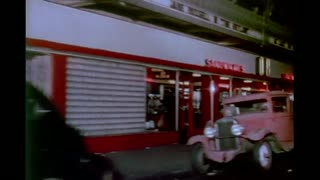 11:11
11:11
Movies, Videos, News and More
4 months agoDowntown Los Angeles streets 1946
40 -
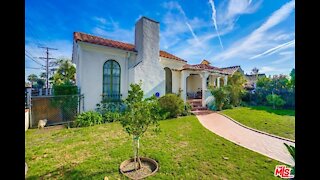 3:37
3:37
Corey Chambers
3 years agoLos Angeles Real Estate Top 10 Downtown Loft and Condo Topics
23 -
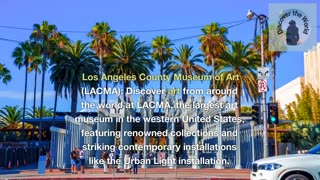 2:30
2:30
Enjoy Traveling
11 months agoThe Best 10 Places to Visit in Los Angeles
2 -
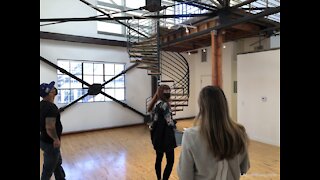 5:00
5:00
Corey Chambers
3 years ago2121 Lofts Apartments Downtown Los Angeles
192 -
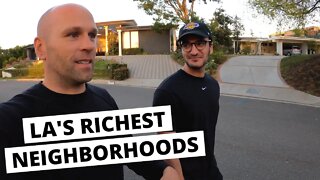 20:46
20:46
Peter Santenello
2 years agoExploring LA's RICHEST Neighborhoods 🇺🇸
112 -
 17:03
17:03
Living In Denver Colorado
10 months agoWindsor CO | Top 3 BEST Neighborhoods
154 -
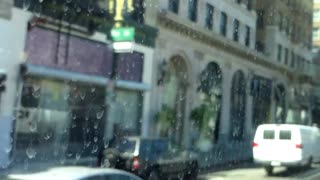 4:18
4:18
amerikantransit
2 years ago\Main street, Downtown Los Angeles
47 -
 0:10
0:10
amerikabeautiful
2 years agoWest side Los Angeles Skyline from Marina del Rey
23 -
 0:19
0:19
LadyWayn
7 months agoView of Downtown Los Angeles
6 -
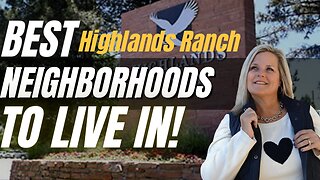 19:29
19:29
Living in Denver Colorado suburbs
1 year agoBest neighborhoods in Highlands Ranch Colorado
5